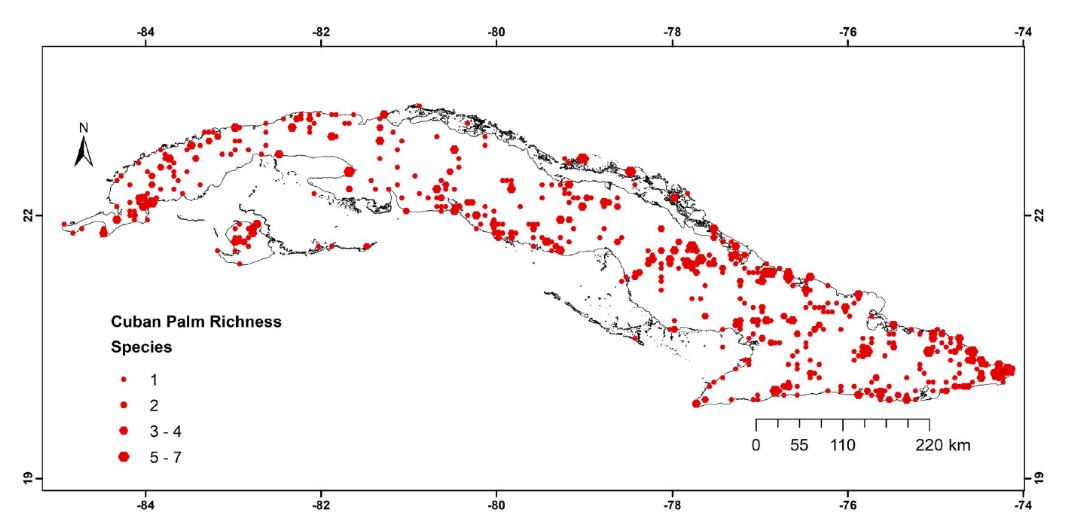Distribution and conservation status of Cuban palms (Arecaceae)
Keywords:
Endangered species, endemism, IUCN, plant formations, protected areas, red list, threatsAbstract
Palms are vital to tropical and subtropical ecosystems, with around 2,600 recognized species. In Cuba, their exceptional diversity and endemism, with 80% of species endemic, underline their ecological importance. However, more than 50% of the 71 species assessed are threatened, with 11 Critically Endangered and one Extinct (Roystonea stellata). Genera such as Coccothrinax and Copernicia are particularly notable but face serious threats from invasive species, intensive agriculture, unregulated logging, and climate change. These challenges are especially acute for microendemic species, many of which fall outside the National System of Protected Areas, which only covers 58.4% of critical palm habitats. Taxonomic uncertainties and a paucity of genetic data further hamper conservation efforts. Although updates to IUCN criteria have refined conservation assessments, progress has been insufficient to reverse the decline. Effective conservation requires an integrated strategy that combines in situ and ex situ measures, specific plans for vulnerable species, and priority protection of underrepresented areas. Engaging local communities, government agencies, and stakeholders in implementing sustainable practices is equally essential. Molecular studies to resolve taxonomic ambiguities and accurately delimit species are critical to ensuring the long-term survival of these iconic species and their ecosystems. To safeguard the future of Cuban palms, which remain a cornerstone of Caribbean biodiversity, a holistic approach addressing both ecological and socioeconomic factors is needed.




